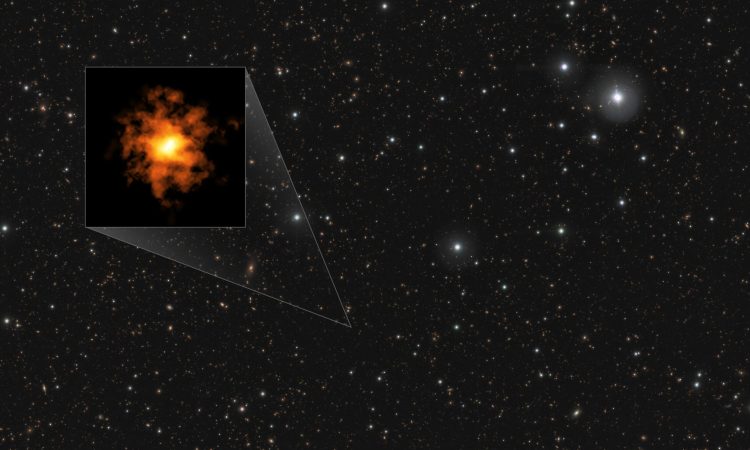
Researchers have discovered the most distant Milky Way-like galaxy ever observed. Called REBELS-25, the galaxy in this case looks organized just like galaxies today, but astronomers see it as it was when the Universe was 700 million years old.
That’s surprising, scientists say, given how we currently understand galaxy formation.
For example, researchers expect galaxies from to be chaotic. The rotation and structure of the REBELS-25 galaxy was revealed using the Atacama Large Millimeter/submillimeter Array (ALMA), a partner of the European Southern Observatory (ESO).
“We expect most early galaxies to be small and disordered”
The galaxies we see today have come a long way since their chaotic and crowded beginnings. “According to our understanding of galaxy formation, we expect most early galaxies to be small and disordered,” explained Jacqueline Hodge, an astronomer at Leiden University in the Netherlands and one of the authors of the study presenting the discovery.
These messy, early galaxies merge with each other and then uniformly evolve at an incredibly slow rate. Current theories suggest that for a galaxy to be as organized as ours (ie a rotating disk with spiral arms) billions of years of evolution must have passed. The REBELS-25 galaxy, however, contradicts what astronomers thought, shows a remis DESCOPERĂ.ro.
The most distant disc galaxy ever discovered
In , accepted for publication in Monthly Notices of the Royal Astronomical Societyastronomers show that REBELS-25 is the most distant disc galaxy ever discovered. The light that reaches us today from this galaxy was produced when the Universe was 700 million years old, or 5% of its current age (13.8 billion years). Thus, the rotation of REBELS-25 is unexpected.
“The increased level of rotation appears to be consistent with recent cosmological simulations that have highlighted the contrast between warm and cold ionized gas, particularly for massive galaxies. We thus show that dynamical disc galaxies can form 700 million years after the Big Bang,” the researchers wrote.
Structures similar to those in the Milky Way
Moreover, the observations suggested that there could be developed structures similar to those in the Milky Way, such as an elongated central bar, and even spiral arms. However, researchers will have to confirm their existence. “It would be an interesting discovery, because it would be with such structures observed so far,” the astronomers said.
Future observations with REBELS-25, as well as other discoveries of early rotating galaxies, have the potential to transform how we understand how galaxies form and .

